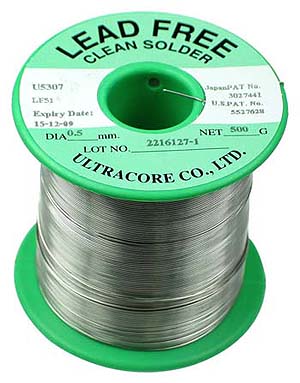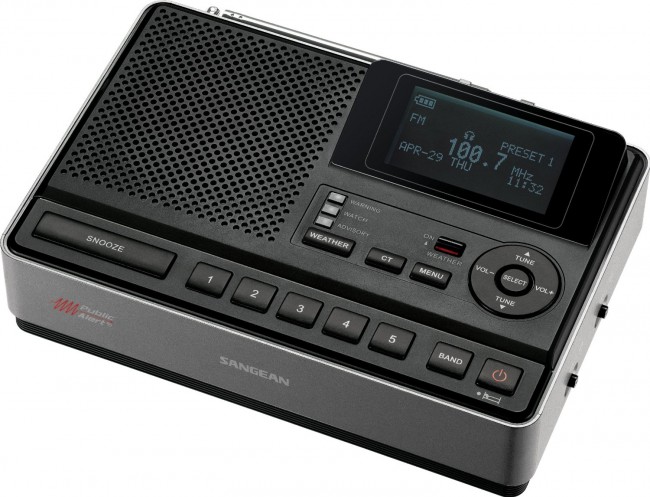My pal, Jeff McMahon, over at the Herculodge writes:
A week ago, my Sangean WR-2 was fried when the electric company surged my house. I replaced it with the Grundig S350DL but it drifted too much.
I then used my superior Crane-SW radio (same size as the big Grundig) and guess what? It died! Those cheap radios today seem to die after 5 years or so.
So I looked through the myriad of unused radios in my cabinet and unearthed a Sangean CL-100 purchased in 2011. For whatever reason, it no longer works with batteries (old double As were left in there and leaked a tiny bit but compartment looked clean enough), so I plugged it in and it works.
FM is better than my Sangean WR-2. I think it has a DSP chip.
AM is better with low background noise, amazing for a radio this small.Speaker is not as good as the WR-2, but it’s clear and okay since I listen mostly through earbuds.
Tiny footprint on my bedside table, which I like.
The menu system is easy enough to use though I wonder if down the road I’ll encounter bugs.
I bought this for about $45 and now it’s about $12 more.
It really suits my needs.
[A] man needs a strong performing bedside radio. That’s the backbone of a collection.
Indeed it is, Jeff!
I see why you like the CL-100. For a bedside radio, the flat/horizontal form factor also makes it less susceptible to being knocked over when you reach for it in the dark.
As for battery operation, you may try removing some of the corrosion on the battery contacts with a file or something mildly abrasive. I’d also hit it with a little Deoxit. (Though knowing Jeff, he’s probably already on this.)
 Having your Sangean WR-2 fried by the power company is bad enough, but then finding out your C.Crane CCradio-SW isn’t working just adds insult to injury.
Having your Sangean WR-2 fried by the power company is bad enough, but then finding out your C.Crane CCradio-SW isn’t working just adds insult to injury.
I should note that, in general, I think C.Crane products are built as well as most others on the market.
I often wonder if premature product failures have less to do with poor quality control and more to do with the lead-free solder electronics manufacturers are forced to use these days.
Many moons ago, a friend sent me this article which outlines concerns about the use of lead-free solder in the military and aerospace industries. It’s worth a read and certainly points out inherent flaws. I often wonder if nearly all of our modern consumer electronics are prone to fail within a decade; you know, planned obsolescence at its worst. Perhaps I’m overreacting.
When I build kits or repair electronics, I only use traditional lead-based solder. Not only is it easier to use, but I feel it will last longer.


I recently picked up a Sangean ATS-909X to use as a bedside radio. This blog post inspired me to put together a video review of the ATS-909X as a bedside radio. The video review can be found on my youtube page: https://www.youtube.com/watch?v=zLSvT6Z3su4&feature=youtu.be
Great review, Marty! I just turned your comment into a post to give it more visibility:
https://swling.com/blog/2015/09/the-sangean-ats-909x-martys-bedside-radio-review/
Cheers,
Thomas
Thank you Thomas! I really appreciate it!
Marty
My pleasure, Marty!
I apologize for this being off-topic…but can anyone steer me to someone in NASWA who could send me a membership form? I keep getting a “Forbidden” when I go to NASWA.net.
Many thanks.
— Neil Bartlett
Using tin/lead solder on our own workbenches is one thing but this won’t necessarily guarantee a longer life for our electronic projects. Nowadays, components with internally soldered connections (for example, integrated circuits) use lead-free solder and it’s these tiny connections that are most likely to “whisker”.
I have a great deal of concern about the long-term viability of even the highest quality electronic equipment being manufactured today. My Heathkit HW-7 and HW-8 transceivers (built from kits in the 1970s) are still going strong after 40 years but I have to wonder if my beloved Elecraft KX3 (built from a kit in 2013) will still be working after 15 years because of lead-free solder used within components and on the factory-populated circuit boards.
Thomas – thanks for sharing the article on lead-free solder – very interesting!
Cheers!